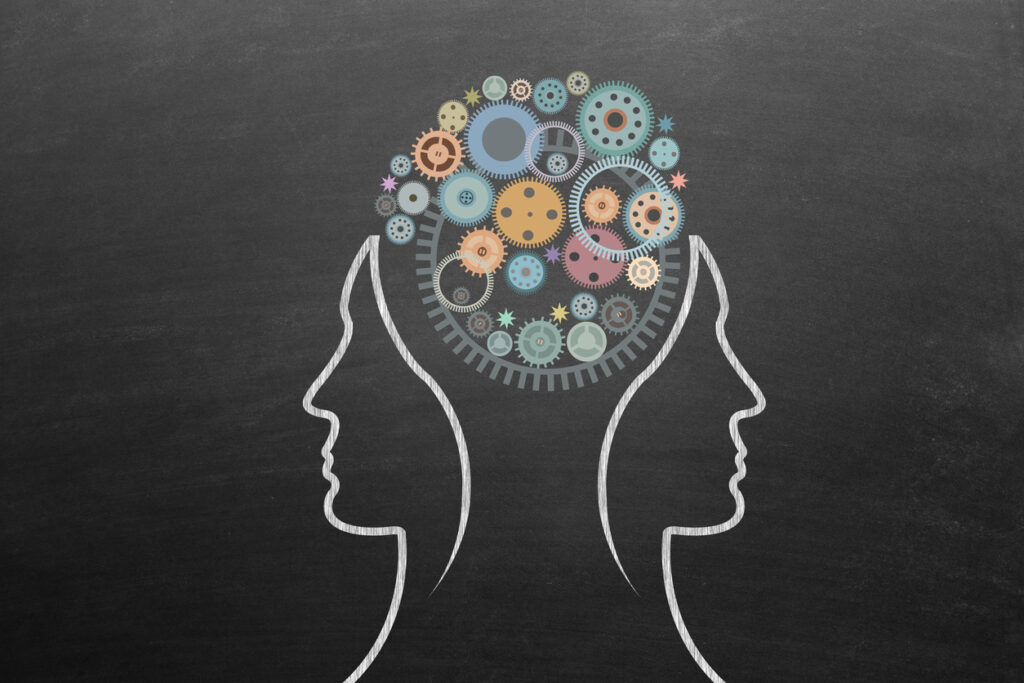Arie de Geus, Shell Oil, once famously said in the 80s ‘A company’s ability to learn faster than its competitors may be its only sustainable competitive advantage in the future.’
This quote has never been truer than it is today as organisations face one of the toughest eras of disruptive change – the fourth industrial revolution. Thanks to advances in emerging technology, organisations will continue to produce products and services at incredible speeds, demanding skills and capabilities that we can’t even envisage.
According to a report by the Institute of the Future (IFTF) 85% of the jobs that will exist in 2030 haven’t even been invented yet.
So, to succeed in this new world, organisations need to out-think, out-perform, out-create and out-learn others, and that means they need people who can develop new competencies at speed.
Understanding neuroscience can help with this – it prepares people for a future when the skills they need are unknown by enabling them to maximise their ability to learn.
The six brain drivers
Our brains have unlimited learning potential. People that learn and perform in ways that suit their unique neurological design can achieve their true potential. Increasing our level of neuro-agility – our brain fitness – means we learn quicker and perform better.
We can do this by firstly understanding the six drivers that optimise brain performance which are:
1. Brain fitness
Our brains are divided into two halves, or hemispheres. Each plays a part in our cognitive capability, with the right side responsible for creative, conceptual and big picture thinking (learning through pictures), and the left for logic, facts, detail and structure (learning through language).
We have a dominant hemisphere and, typically, we use each hemisphere alternately (homolateral mode). For optimum brain performance, we need to develop the ability to use both hemispheres simultaneously (bilateral mode).
2. Sleep
Sleep is essential for brain health and optimum brain performance. A 2007 report published in the US National Library of Medicine showed that a single night of sleep deprivation reduced the ability to commit new experiences to memory.
3. Stress
When we are stressed our bodies produce cortisol, and this inhibits the way information is transmitted within the brain. It suppresses the functioning of our non-dominant hemisphere, so we lose access to that way of thinking.
For example, in a stressful situation, someone with a strong right brain dominance will find it difficult to learn things that include lots of detail or operate in a structured or planful way. So, reducing stress is essential if we want to help people learn.
4. Movement
Movement stimulates brain activity because it stimulates the growth of dendrites in the brain, and these enable messages to be transmitted throughout the brain – the more dendrites we have, the more communication occurs in the brain.
Moving in ways that causes us to cross the body’s mid-line, such as touching the opposite elbow and knee, or crossing one foot over the other while walking sideway, builds new pathways in the brain and helps develop bilateral functioning.
Stretching also increases the flow of cerebral spinal fluid in our brains, which acts as a cushion for the brain, and transports toxins and waste products out to enable it to work effectively. Sitting still for long periods of time leads to a drop in concentration and makes it hard to learn and retain information, so get people moving while they learn!
5. Attitude
Our attitude is formed from the ways we habitually think, and it significantly impacts the outcomes we achieve. A recent study showed how positive emotions broaden your sense of possibility and open your mind to more options.
The chemicals produced by positive thoughts and feelings enable better communication within the brain and support enhanced learning. Encouraging learners to have a positive attitude to what they are learning and to focus on the desired, successful outcome will boost their brain performance.
6. Food
An adult’s brain accounts for 20% of the body’s total energy usage, and it gets that energy from the food we eat and the oxygen we breathe. Studies prove links between food types and how well our brains work. Consider providing healthy snacks for learners rather than sugary or fatty foods.
The brain factors
To improve brain fitness you need to understand your own unique neurological design, and that of your team’s, as well as the several factors that impact brain function:
-
Lateral dominance – understand your preferred hemisphere – left or right – to identify whether you learn best through words or visuals, so you can find the best way of accessing new information.
-
Expressive or receptive preference – how you use the back and front areas of your brain influences whether you typically learn best by reflection (receptive preference) or by sharing responses verbally (expressive preference). Knowing your preference will enable you to find the right learning environment.
-
Rational or emotional preference – learners with a rational preference will enjoy academic and theoretical types of learning while people with an emotional preference will benefit from a more experiential ‘doing’ approach.
-
Information processing style – we use our five senses to take in information, and the way we do that is influenced by our lateral dominance. Knowing this will help you to be aware of any neurological hindrances you may experience, especially when under stress, and how to mitigate them.
Give your brain a workout
There are neuroscientific tools that will assess and develop brain fitness and help learning to stick, but there are also some simple steps you and your team can take to give your brain a quick workout and improve your learning agility:
-
Programme the possible – thoughts become realities, so create the reality you want. Repeating the message aloud for 42 consecutive days and visualise the outcome to create a new pathway, a physical connection between the brain cells.
-
Be more whole-brained – encourage both brain hemispheres to work simultaneously through physical activities that require coordination and crossing of the body’s midline (such as swimming, dancing, aerobics) and mental activities like playing chess, online brain training games, Sudoku, and crosswords.
-
Feed your brain – “Traditional” diets (e.g. Mediterranean and Japanese) result in better mental health and cognitive functioning, while Western style diets, higher in saturated fats and refined carbohydrates, seem to have a negative impact. Eat lots of nutrient dense foods, such as vegetables, fruit, whole grains and fish, and stay hydrated.
-
Sleep is not just for beauty – in our 24/7, always-on world, many of us aren’t getting enough sleep. Think about your sleeping patterns. The National Sleep Foundation recommends sticking to a “sleep schedule” of the same bed and wake up times and practice relaxing bedtime rituals to help you fall and stay asleep.
With an increased understanding of how the brain works and specifically what makes ourselves and others tick, learning and development can design and present learning in a variety of ways and in environments that stimulate the brain.
The more positively stimulated we are, the better we retain and apply learning and the quicker we develop new skills. With this knowledge, you can help people learn today in a way that will keep up with the constant changes of tomorrow.
Arie de Geus, Shell Oil, once famously said in the 80s ‘A company’s ability to learn faster than its competitors may be its only sustainable competitive advantage in the future.’
This quote has never been truer than it is today as organisations face one of the toughest eras of disruptive change – the fourth industrial revolution. Thanks to advances in emerging technology, organisations will continue to produce products and services at incredible speeds, demanding skills and capabilities that we can’t even envisage.
According to a report by the Institute of the Future (IFTF) 85% of the jobs that will exist in 2030 haven’t even been invented yet.
So, to succeed in this new world, organisations need to out-think, out-perform, out-create and out-learn others, and that means they need people who can develop new competencies at speed.
Understanding neuroscience can help with this – it prepares people for a future when the skills they need are unknown by enabling them to maximise their ability to learn.
The six brain drivers
Our brains have unlimited learning potential. People that learn and perform in ways that suit their unique neurological design can achieve their true potential. Increasing our level of neuro-agility – our brain fitness – means we learn quicker and perform better.
We can do this by firstly understanding the six drivers that optimise brain performance which are:
1. Brain fitness
Our brains are divided into two halves, or hemispheres. Each plays a part in our cognitive capability, with the right side responsible for creative, conceptual and big picture thinking (learning through pictures), and the left for logic, facts, detail and structure (learning through language).
We have a dominant hemisphere and, typically, we use each hemisphere alternately (homolateral mode). For optimum brain performance, we need to develop the ability to use both hemispheres simultaneously (bilateral mode).
2. Sleep
Sleep is essential for brain health and optimum brain performance. A 2007 report published in the US National Library of Medicine showed that a single night of sleep deprivation reduced the ability to commit new experiences to memory.
3. Stress
When we are stressed our bodies produce cortisol, and this inhibits the way information is transmitted within the brain. It suppresses the functioning of our non-dominant hemisphere, so we lose access to that way of thinking.
For example, in a stressful situation, someone with a strong right brain dominance will find it difficult to learn things that include lots of detail or operate in a structured or planful way. So, reducing stress is essential if we want to help people learn.
4. Movement
Movement stimulates brain activity because it stimulates the growth of dendrites in the brain, and these enable messages to be transmitted throughout the brain – the more dendrites we have, the more communication occurs in the brain.
Moving in ways that causes us to cross the body’s mid-line, such as touching the opposite elbow and knee, or crossing one foot over the other while walking sideway, builds new pathways in the brain and helps develop bilateral functioning.
Stretching also increases the flow of cerebral spinal fluid in our brains, which acts as a cushion for the brain, and transports toxins and waste products out to enable it to work effectively. Sitting still for long periods of time leads to a drop in concentration and makes it hard to learn and retain information, so get people moving while they learn!
5. Attitude
Our attitude is formed from the ways we habitually think, and it significantly impacts the outcomes we achieve. A recent study showed how positive emotions broaden your sense of possibility and open your mind to more options.
The chemicals produced by positive thoughts and feelings enable better communication within the brain and support enhanced learning. Encouraging learners to have a positive attitude to what they are learning and to focus on the desired, successful outcome will boost their brain performance.
6. Food
An adult’s brain accounts for 20% of the body’s total energy usage, and it gets that energy from the food we eat and the oxygen we breathe. Studies prove links between food types and how well our brains work. Consider providing healthy snacks for learners rather than sugary or fatty foods.
The brain factors
To improve brain fitness you need to understand your own unique neurological design, and that of your team's, as well as the several factors that impact brain function:
Lateral dominance – understand your preferred hemisphere – left or right – to identify whether you learn best through words or visuals, so you can find the best way of accessing new information.
Expressive or receptive preference – how you use the back and front areas of your brain influences whether you typically learn best by reflection (receptive preference) or by sharing responses verbally (expressive preference). Knowing your preference will enable you to find the right learning environment.
Rational or emotional preference – learners with a rational preference will enjoy academic and theoretical types of learning while people with an emotional preference will benefit from a more experiential ‘doing’ approach.
Information processing style – we use our five senses to take in information, and the way we do that is influenced by our lateral dominance. Knowing this will help you to be aware of any neurological hindrances you may experience, especially when under stress, and how to mitigate them.
Give your brain a workout
There are neuroscientific tools that will assess and develop brain fitness and help learning to stick, but there are also some simple steps you and your team can take to give your brain a quick workout and improve your learning agility:
Programme the possible – thoughts become realities, so create the reality you want. Repeating the message aloud for 42 consecutive days and visualise the outcome to create a new pathway, a physical connection between the brain cells.
Be more whole-brained – encourage both brain hemispheres to work simultaneously through physical activities that require coordination and crossing of the body’s midline (such as swimming, dancing, aerobics) and mental activities like playing chess, online brain training games, Sudoku, and crosswords.
Feed your brain – “Traditional” diets (e.g. Mediterranean and Japanese) result in better mental health and cognitive functioning, while Western style diets, higher in saturated fats and refined carbohydrates, seem to have a negative impact. Eat lots of nutrient dense foods, such as vegetables, fruit, whole grains and fish, and stay hydrated.
Sleep is not just for beauty – in our 24/7, always-on world, many of us aren’t getting enough sleep. Think about your sleeping patterns. The National Sleep Foundation recommends sticking to a “sleep schedule” of the same bed and wake up times and practice relaxing bedtime rituals to help you fall and stay asleep.
With an increased understanding of how the brain works and specifically what makes ourselves and others tick, learning and development can design and present learning in a variety of ways and in environments that stimulate the brain.
The more positively stimulated we are, the better we retain and apply learning and the quicker we develop new skills. With this knowledge, you can help people learn today in a way that will keep up with the constant changes of tomorrow.








